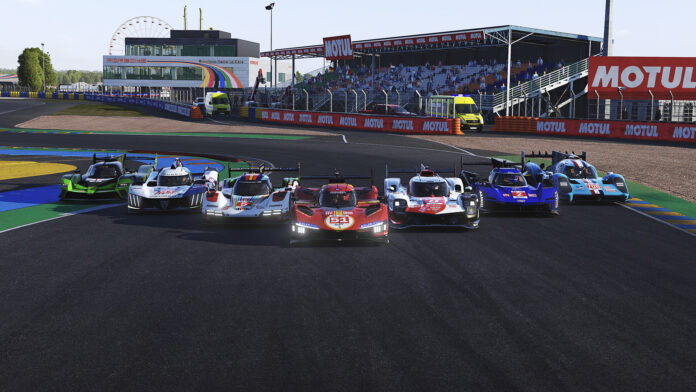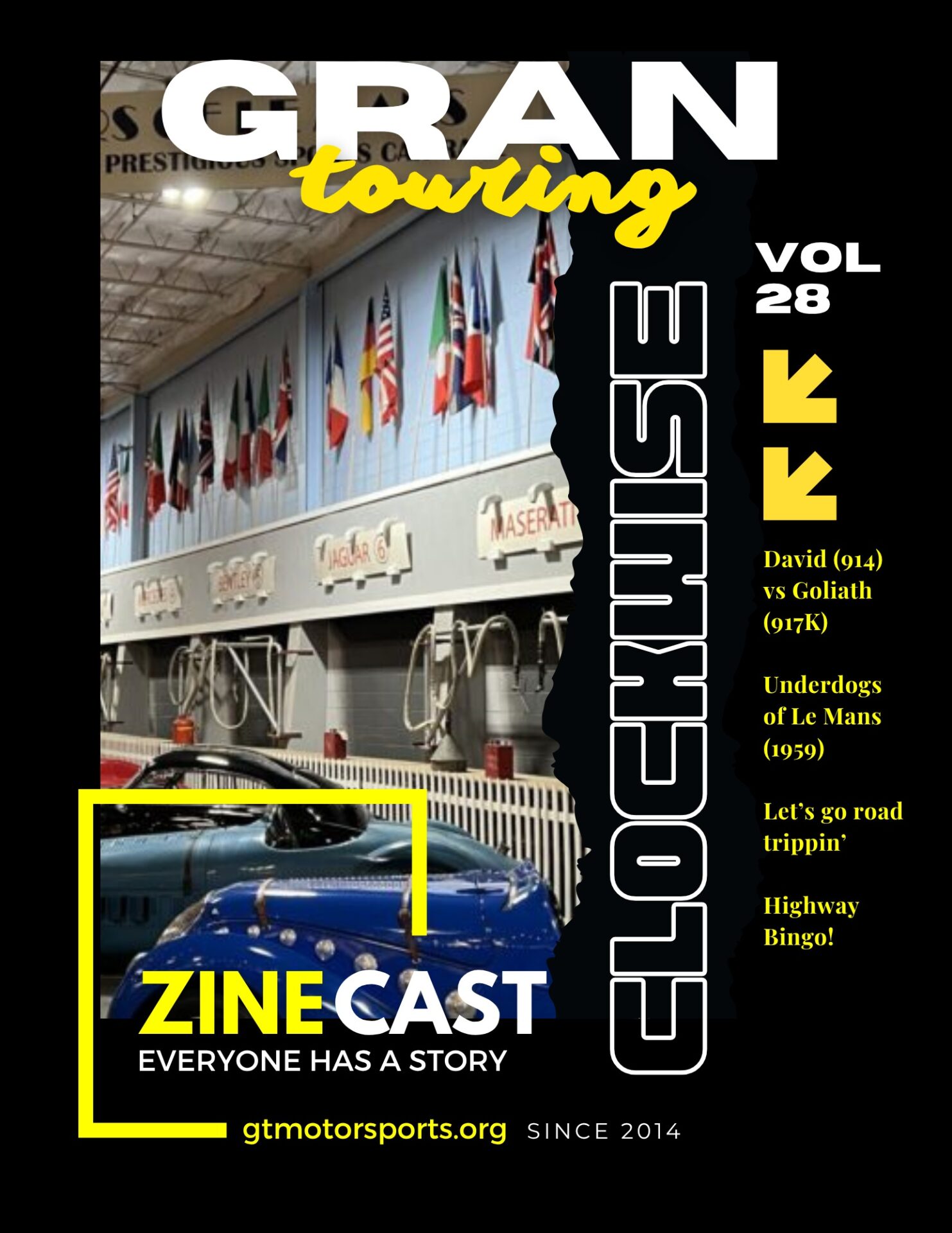For an upcoming activation, we worked with and challenged our partners at Gran Touring Motorsports (GTM) to figure out which is “the fastest” (or most equal) car in the GTP / HY / LMP1 class in the newly released Le Mans Ultimate sim. Our driver, GTM’s Crew Chief Eric is running a full spec’d AMD powered system with a Challenge PlaySeat, and MOZA Racing R9 CS, CRP Pedal box along with the add-on Handbrake and H-pattern shifter (as mentioned in this article). Each vehicle was tested using the same conditions: Closed Course (no AI distractions), 18 minutes. Real tire wear, real fuel consumption, TCS set to 8 (car vary from 6 to 8 stock), and No Sets. Best lap of the session goes on the leaderboard. Check out the compiled sessions and results from on-board Crew Chief Eric’s rig below.
Crew Chief’s Thoughts & Notes about each Vehicle
- Cadillac – takes some getting used to, and can be a bit twitchy. Exercising patience on corner exit throttle application is a must to avoid tank slapping. However, the more time you spend with the Cadillac you begin to realize it’s very good on tire consumption, and rewarding to drive long term.
- Ferrari – has the best brakes out of all cars, consistent throughout the entire session. You can continually brake deep, late and even trail brake into corners if you’ve mastered the skill. The Ferrari’s engine is a bit high-strung which means having to really rev it out through the upper gears to achieve a top speed in the range of the rest of the cars.
- Glickenhaus – one of two “non-Hybrid” cars in the fleet. The Glickenhaus accelerates quickly due to its close ratio gearing up through 6th, but it tends to understeer, and also provides some “bumpy” Force Feedback as the tire wear down. It also tends to lock up the brakes if you push too deep into a corner. It can exceed 200 mph, but 7th gear is a bit tall and therefore it struggles past 205 mph.
- Peugeot – the second fastest in a straight line due to its slippery Aerodynamics. But that’s also this cars Achilles heel, it can tend to step out in corners if you’re not constantly vigilant, but when it does break loose, it’s pretty controllable, and can produce some epic power slides.
- Porsche – sitting somewhere in the middle of the pack, it has one of the better exhaust notes. The engine is quite torquey and power delivery is very linear, which is typical of many racing Porsches. But the added torque also makes it want to step out, therfore careful throttle application and timing is key at corner exits. The 963 also tends to chew up the front tires more quickly than some of the other cars. You might be able to achieve 1 or 2 “hot laps” before they start to give out, making tire management extra important in longer stints. The Porsche also has the most violent steering pull down the long straights, be sure to keep your hands firmly on the wheel at high speed or it will see-saw you off the track!
- Toyota – its the Le Mans halo car, it’s near perfect, and it’s really quick… everywhere. It’s hard not to be fast in the Toyota. Braking is strong, but not as consistent as the Ferrari. It has the highest top speed down the Mulsanne, but the handling and grip are by far the best.
- Vanwall – The second “non-Hybrid” in the bunch. The Vanwall is also the only car with a 6-speed transmission (all the others being 7 speeds); It too can reach 200+ mph, but because of the longer gear ratios, it takes much longer to get there, and unfortunately makes it the slowest. But for what it lacks in speed, it makes up for in handling! It’s playful, responsive and a joy to drive, giving the best “smile factor” of the bunch. You also get the impression you’re driving an Indy car with full body work (especially the sound) compared to the rest of the Sports Prototypes.
Final Standings
As you can see, most of the cars are very close in time, with our driver putting down consistent laps in the 3:34 range. The Cadillac and Ferrari were only separated by 0.05 of a second. But the clear winner was the Toyota with a 2 second advantage over the rest of the field, and time left on the boards. We narrow down the Toyota’s advantage to the fact that it can achieve a top speed of 211 mph compared to other vehicles that hit their terminal velocity around 206-209. Those extra couple of miles-per-hour partnered with the Toyota’s acceleration, hybrid system and gearing adds up over the 8.5+ mile lap of Le Mans. Outside of the two “non-Hybrid” HY class cars (Glickenhaus & Vanwall) our opinion is that all of the cars are well matched. Pick your favorite brand, favorite sound or the one that suits your sim driving style best – either way, you won’t be disappointed.
Come try them for yourself.
If you don’t have access to a sim-rig or one capable of running Le Mans Ultimate yet, come try it out for yourself at our upcoming activation in conjunction with the ACO USA’s Le Mans 2024 Viewing Party at M1 Concourse in Detroit, Michigan. Details on the event, and how you can register can be found here. If you’re a fan of Le Mans and want to get more access to upcoming news, events, and special “Evening with a Legend” series livestreams, check out the ACO USA’s membership packages today and “Become Part of the Legend” of Le Mans.
Special Thanks to our Partners for contributing to this research!


























